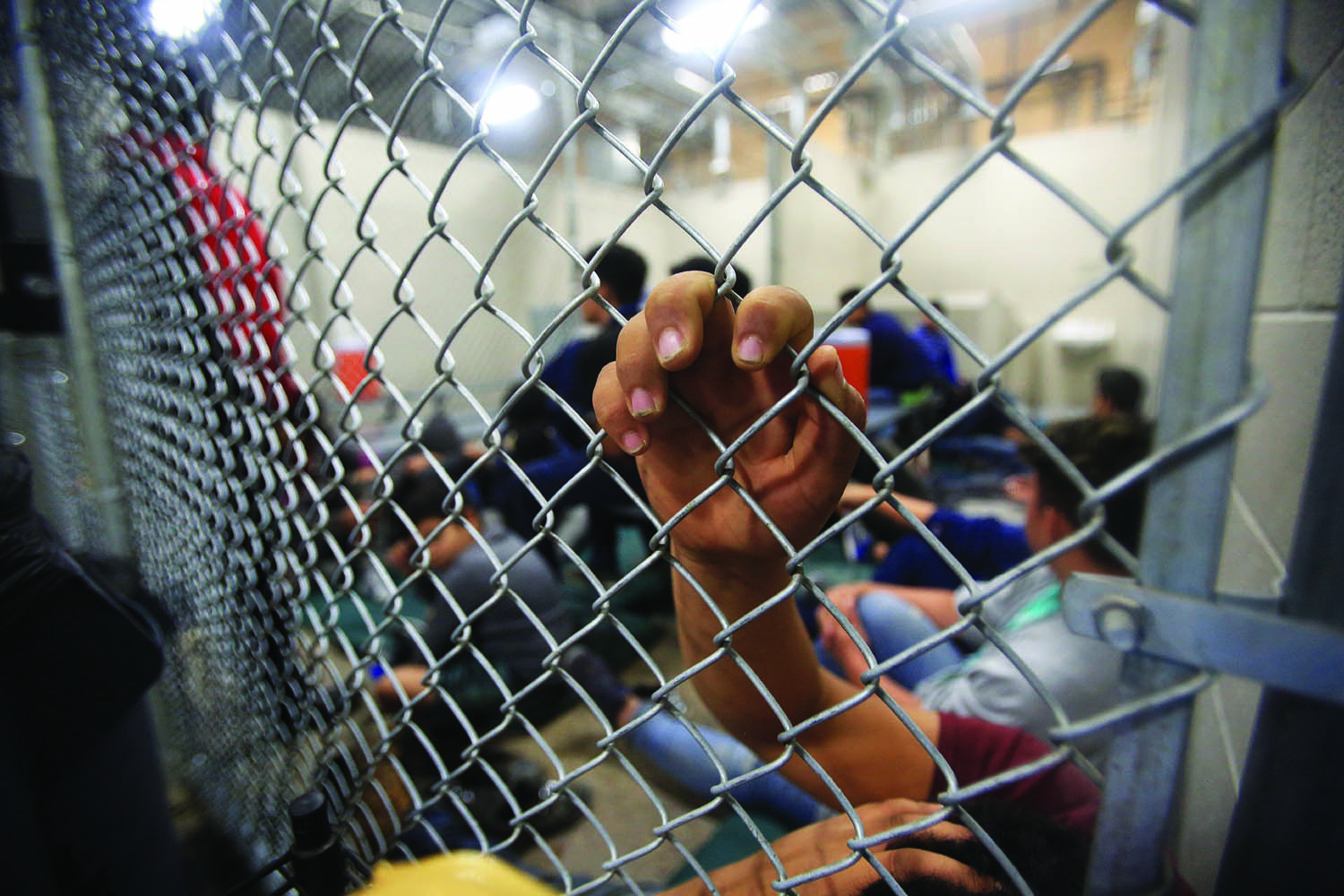
McALLEN — A day after a congressional delegation headed by House Speaker Nancy Pelosi visited Border Patrol’s Rio Grande Valley Central Processing Center, officials here invited local media for a tour.
The Central Processing Center, along with the “soft-sided” detention center in Donna, has been the focus of numerous visits by high-profile politicians, including Vice President Mike Pence, who have been accompanied by national media outlets.
Typically, local press has not been invited to those events.
While there were no politicians involved in the Monday tour, though a reporter and photographer from the Washington Post were in town to tour the facility, the scene inside the 77,000-square-foot facility comprised of two warehouses that were converted into a processing facility during President Barack Obama’s administration in 2014, was a far cry from scenes at the facility in May, June and July.
Instead of hundreds of people packed behind fencing in holding cells witnessed by Pence and other high-ranking members of the Republican and Democratic parties last month, on Monday, the processing center held fewer than 1,300 people, mostly families.
That’s been the case for several weeks, said Acting Deputy Patrol Agent Oscar Escamilla.
Normally, illegal immigration slows during the summer months, though Border Patrol is still reporting large groups of people crossing and turning themselves in to authorities.
In one quarter of the facility, men were held in the holding cells, some of whom held young children. Their cell was connected to another where several young boys watched television.
They had mats to sleep on and silver mylar blankets dotted the floor where people slept. Others sat on benches.
Women were held in another quarter of the facility in closer quarters, as there appeared to be more women and children than men with children. They sat on benches with young children — waiting.
The other half of the facility held children 10 and older whose parents were held on the other side of the processing center and unaccompanied minors.
Acting Deputy Patrol Agent Oscar Escamilla said for security reasons children older than 10 are held with unaccompanied minors as opposed to with their parents.
Escamilla said parents are allowed to meet with their child inside the facility for 15 to 20 minutes every evening.
Unaccompanied children and children older than 10 are separated by gender and age. During the Monday morning tour, many of the teenage boys slept under mylar blankets while younger boys watched television.
There seemed to be fewer girls in the facility. A group of younger girls watched television while teenaged girls sat in groups together.
Escamilla said the average time people spent at the Central Processing Center recently was 46 hours before being released to Catholic Charities or transferred to the “soft-sided” detention center in Donna.
When asked how MPP applies to people detained at the Central Processing Center after the tour, CBP said in a statement that MPP may be applied to people apprehended for entering the country illegally.
“MPP may be applied to aliens arriving in the U.S. on land from Mexico, including those apprehended between the ports of entry who are inadmissible and who are placed in removal proceedings,” CBP said in a statement.
Asked directly whether people processed by Border Patrol at the Central Processing Center are bussed to Brownsville to be released under the MPP policy, CBP replied with a list of ports of entry where MPP is in effect.
The Central Processing Center is split into two areas, the 55,000-square-foot space, which is where people depending on gender and age, are held in the four quadrants.
Space was tighter in the 22,000-square-foot-facility, which is where people who turned themselves in or were apprehended by Border Patrol are initially processed.
On Monday morning, the cells were packed with people being processed.
Escamilla said they had been detained around midnight early Monday morning.
A teenage boy could be seen having his fingerprints taken after standing in front of a measurement chart where a U.S. Customs and Border Protection officer took his picture.
One cell held teenage boys in close quarters, with half a dozen or so laying down, resting.
Escamilla also showed an area where people are screened for illness, in the event they need to be transferred to a station in Weslaco Border Patrol uses for sick people. If there’s an emergency, Escamilla said agents call 911.
A cart holding prescription pills and various medication in plastic bags sat in the area.
The operation there is around the clock. During the media tour, Border Patrol agents had just brought a small group of people to the center where they sat on benches while in another area of the processing center, a group of more than two dozen — mostly women with small children — sat on benches waiting for a ride to Catholic Charities.






